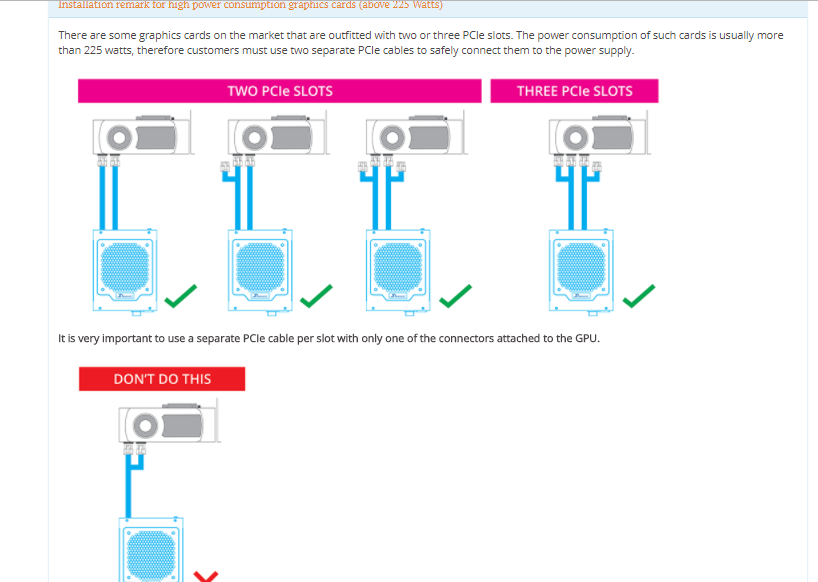Hi everyone,
I have been trying to diagnose a system lag issue with my system and I'm at a point now where I can't figure out what may be causing the issue. Basically, I have noticed that at certain points when gaming or OS use, whenever I would load a program or app, there would be a lag or stutter and then everything would return to normal.
So far I have tried the following:
There are 2 more things I want to try with the PSU but I am doubtful if they'll make any difference from what I've read. Be quiet! supplied 2x 8-pin PCIe cables instead of the usual single 8-pin cables. Now they're not exactly like the daisy-chain ones but they feed into a single, 12-pin connector, essentially meaning there are 2x 8-pin cables coming out of a single 12-pin connector on the PSU side. But I went ahead and ordered their single 8-pin cables as I had read that the 3080/3090 prefer dedicated 8-pin connectors. Though from what it looks like, its basically the same 2x 8-pin cable that plugs into the 12-pin connector but being a single cable coming out of some pins but not all 12 like a 2x 8-pin. At the very least, it will make cabling neater in the case but I am skeptical if it'll make a functional difference to the system. The other idea is to use the jumper to switch the PSU from multi-rail to single-rail mode. I would REALLY prefer not do this for safety reasons as well as protecting components but if it will make the system run smoother, it might be a risk I'd be willing to take.
So aside from all this, can anyone identify any possible causes of this? I am tempted to contact AMD and arrange an RMA with them as I said CPU and motherboard are the last 2 things I haven't swapped out but I would rather contact either AMD or ASUS and arrange an RMA than to wastefully arrange an RMA with AMD when the issue is motherboard related or vice versa.
Thanks for reading!
I have been trying to diagnose a system lag issue with my system and I'm at a point now where I can't figure out what may be causing the issue. Basically, I have noticed that at certain points when gaming or OS use, whenever I would load a program or app, there would be a lag or stutter and then everything would return to normal.
So far I have tried the following:
- Temperatures
- All temperatures reported normal in HwInfo
- Idle 40c-50c. Average load operation 65-70. Maxing out at 78c but never sustained (Ryzen is fun...)
- Idle 40c core, 50c memory junction. GPU core around 70c-74c under full load, memory Junction around 90c-92c under load.
- All temperatures reported normal in HwInfo
- BIOS
- Tried using BIOS optimized defaults
- Turned off Security Module / TPM
- RAM
- Removed 1 stick of RAM, leaving only 1 module in A2 (motherboard specification)
- Replaced that 1 stick of RAM with the one I removed
- Tried slots A1 through B2
- Replaced entire kit with a 4x8GB 1R Kingston 3600Mhz RAM (Kingston HyperX Predator RGB 32GB (4x8GB) DDR4 PC4-29000C17 3600MHz Quad Channel Kit (HX436C17PB4AK4)
- Replaced GPU with a friend's ASUS ROG Strix RTX 3090
- Drivers
- Updated GPU drivers to latest
- Downloaded latest drivers direct from vendors (e.g.: AMD for Chipset, Realtek for LAN, Intel for LAN/WiFi etc.)
- Did a fresh Windows reinstall after downloading them
- Firmware/BIOS
- BIOS Updated to latest (4201)
- NVME drives firmware updated using Samsung Magician
- OS
- Tried basic startup, loading only essential services
- PSU was RMA'ed as suspected power issues
- Moving games between SSDs and HDD
- Double and triple checked all my PSU connections to motherboard, GPU to insure fully inserted and secured
- Tried connecting GPU using this wiring diagram reference. (PCIe 1 on a 1x 8-pin, 1x 8-pin unused, to 12-pin PSU connection, PCIe 2-3 on a 2x 8-pin to 12-pin PSU connection)
-
There are 2 more things I want to try with the PSU but I am doubtful if they'll make any difference from what I've read. Be quiet! supplied 2x 8-pin PCIe cables instead of the usual single 8-pin cables. Now they're not exactly like the daisy-chain ones but they feed into a single, 12-pin connector, essentially meaning there are 2x 8-pin cables coming out of a single 12-pin connector on the PSU side. But I went ahead and ordered their single 8-pin cables as I had read that the 3080/3090 prefer dedicated 8-pin connectors. Though from what it looks like, its basically the same 2x 8-pin cable that plugs into the 12-pin connector but being a single cable coming out of some pins but not all 12 like a 2x 8-pin. At the very least, it will make cabling neater in the case but I am skeptical if it'll make a functional difference to the system. The other idea is to use the jumper to switch the PSU from multi-rail to single-rail mode. I would REALLY prefer not do this for safety reasons as well as protecting components but if it will make the system run smoother, it might be a risk I'd be willing to take.
So aside from all this, can anyone identify any possible causes of this? I am tempted to contact AMD and arrange an RMA with them as I said CPU and motherboard are the last 2 things I haven't swapped out but I would rather contact either AMD or ASUS and arrange an RMA than to wastefully arrange an RMA with AMD when the issue is motherboard related or vice versa.
Thanks for reading!
Last edited:



